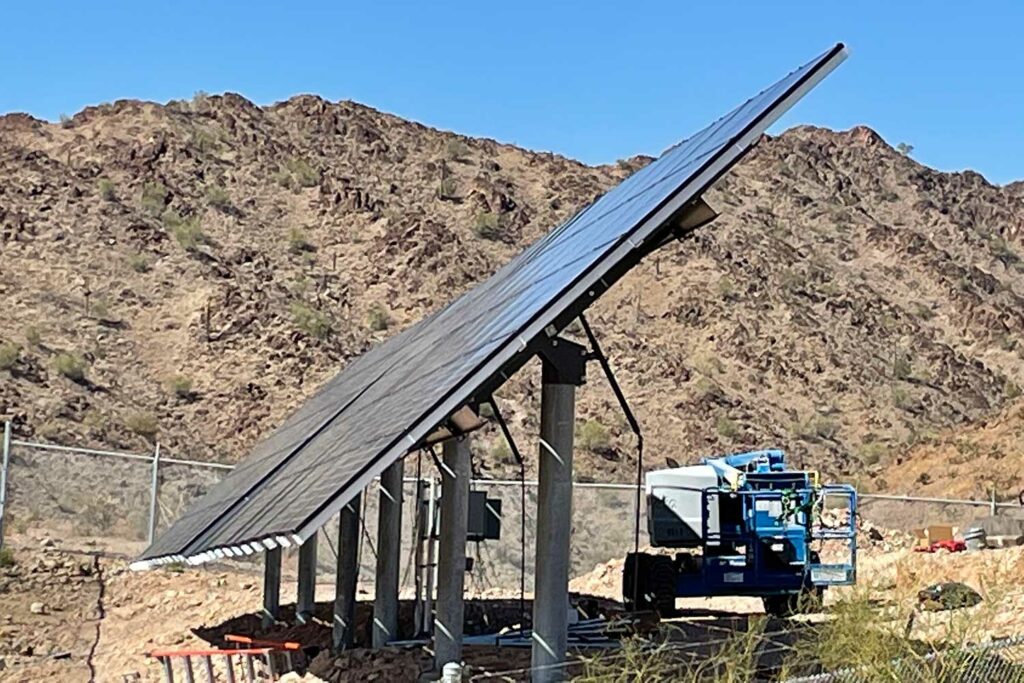This past year has been busy with numerous off-grid solar installations across the US. From rural electrification to powering telecommunication towers, ISC has been helping more organizations and communities switch to clean, solar energy.
Off-Grid Solar Residential Installations on the Navajo Nation
At the end of September, we began installing another 150 off-grid residential solar systems on the Navajo nation. These supplement the 150 installations we previously performed in early 2021. By sourcing almost entirely local labor, we’re working with the Navajo Tribal Utility Authority (NTUA) to support the local community while making it possible for residents to utilize much-needed clean energy. These and our previous 150 systems are all installed with remote monitoring.
We also added monitoring to an additional 150 sites previously installed by a separate solar contractor. By monitoring these systems, users can detect when there might be a potential outage, overuse or need for repairs. Bringing reliable, clean electrification to rural and tribal communities is one of our biggest passions. We’re hoping to work with additional tribal and rural communities to provide much-needed power without the need for fossil fuels.
Time-lapse of Off-Grid Solar Panels Going Up
Amid the busy activities at every installation, we managed to capture some great time-lapse footage of our recent work at Dome Rock, on the Arizona/California border. This site is a great example of our work with the telecommunications industry, helping to expand cell service. Built by ISC for AT&T, this site uses solar, battery and generator backup to help provide cell service for the rolling hills and rocky terrain near Quartzsite that blocks many if not all carrier signals. Numerous off-road trails and the sand dunes of Blythe, CA surround the area.
A Rehabilitated Solar Site, Helicopter-only Access
Some of our sites are so remote, they can’t be accessed by a road. Our work removing and rehabilitating an off-grid power system at the Kofa National Wildlife Refuge could only be accessed by helicopter. This small repeater system for the U.S. Fish and Wildlife Service had ended its useful life and needed repair. All personnel, tools and materials were hauled up to the mountain peak via helicopter and long line. We provided all replacement material, removed the existing equipment then installed and tested new equipment.
Sites like this one require specialized coordination of labor and equipment that many crews may not be familiar with. Our experience with specialized logistics in off-grid sites is why we are frequently selected for these projects. Unexperienced contractors often fail to plan for the many variables helicopter use entails. This can end up increasing costs significantly.
First, We Have to See What is Possible
Before we can begin work on a remote solar site, we first have to see what is possible. This is where a Solar Feasibility Study becomes necessary. Recently, we returned from a visit to the Arizona/Utah border to perform feasibility studies on three new scenic sites. We believe initial site visits like these are essential in designing an efficient and optimized solar installation. ISC considers many variables including site accessibility, existing utilities, terrain, vegetation, shading and more. We also audit the existing installations to see how our new system might impact theirs.
In addition to determining how to design a solar site that is high-quality and buildable, these studies also allow us to view remote and scenic landscapes we couldn’t normally visit. Visits like these help to remind us why we are working so hard to make the shift to clean energy.
